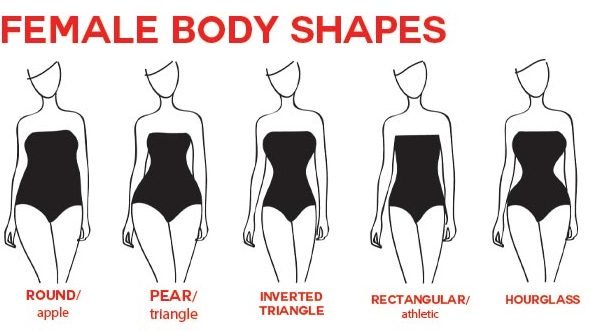The Ultimate Guide to Different Types of Diets for Healthy Body

Photo by silviarita on Pixabay
In today’s world, there seems to be an endless number of diets claiming to help with weight loss, muscle gain, and overall health improvement. With millions of people going on diets each year and a weight management market valued at billions of dollars, it’s essential to understand the most common types of diets better. Knowing the Different Types of Diets available lets you decide which works best for your lifestyle and goals.

Before we explore the various diets, it’s important to remember that no single diet is the ultimate solution for everyone’s health needs. Whether you’re looking to lose weight or gain muscle, the key to success lies in maintaining a caloric deficit or surplus, respectively. Prioritizing calorie intake is crucial, and the diet choice should be based on personal preference.
It’s also worth noting that food quality is just as crucial as macronutrient composition. Studies have shown that the nutritional value of food plays a significant role in overall health. For example, a low-carb diet should still focus on consuming quality fats and protein, while a diet lower in fat should prioritize whole grains over refined starches. Additionally, some diets may lack essential micronutrients, such as vitamins and minerals necessary for everyday life. For instance, vegetarians may be more likely to develop an iron deficiency. It’s essential to consult a doctor or a registered dietitian to ensure you meet all your nutritional needs.
Now, let’s delve into the different Types of Diets and the most popular nowadays and what they’re all about.
Different Types of Diets
Intermittent Fasting: A Flexible Eating Strategy
Intermittent fasting has gained significant popularity in recent years. It is not so much a diet as it is an eating strategy. The concept involves consuming all your calories within a specific period and fasting for the rest of the day. The most common approach is the 8:16 split, where you eat within an eight-hour window and fast for the remaining 16 hours. However, other variations, such as 10:16 or 6:20, are also practiced.
The primary goal of intermittent fasting is to reduce overall calorie intake by condensing it into a shorter timeframe. Zero-calorie beverages like black coffee, herbal teas, and water are allowed during fasting. Multiple studies have shown that intermittent fasting leads to weight loss, improves insulin resistance, reduces oxidative stress, stabilizes blood sugar levels, and lowers the risk of strokes.
The Mediterranean Diet: A Lifestyle Inspired by the Sea
The Mediterranean diet takes inspiration from the eating habits of people living near the Mediterranean Sea. Countries like Greece, Italy, Spain, Lebanon, and Turkey
are known for their longevity and lower rates of chronic diseases. The diet primarily consists of heart-healthy foods such as vegetables, fish, fruit, grains, olive oil, and nuts. Red meat consumption is limited, and dairy intake is moderate, emphasizing high-quality sources like yogurt and cheeses.

In addition to the food choices, the Mediterranean lifestyle promotes physical activity, socializing, and stress management. Studies have shown that the Mediterranean diet not only leads to weight loss but also reverses symptoms of diabetes and cardiovascular diseases. It is considered one of the most extensively studied diets, with reliable research supporting its use for improving overall quality of life and reducing disease risk.
The Ketogenic Diet: Fueling the Body with Fat

The ketogenic diet, often called the keto diet, is a low-carbohydrate, high-fat diet that aims to put the body into ketosis. Ketosis is a metabolic state where the body primarily burns fat for energy instead of carbohydrates. By significantly reducing carbohydrate intake and increasing fat intake, the body is forced to rely on fats for fuel.
The keto diet typically consists of consuming 65-75% of daily calories from fats,
20-30% from proteins and only 5% from carbohydrates. Foods like avocados, eggs, and nuts are encouraged, while high-carb foods like grains, sugary drinks, and processed snacks are restricted. Although the keto diet has been claimed to treat various conditions, including cancer and respiratory illnesses, more research is needed to understand its long-term effects fully.
If It Fits Your Macros (IIFYM): Customizing Your Diet
If It Fits Your Macros, also known as IIFYM or flexible dieting, is a dietary approach that focuses on tracking and meeting specific macronutrient targets while allowing flexibility in food choices. The diet emphasizes the importance of hitting individualized protein, carbohydrate, and fat goals for optimal results.
Following IIFYM requires determining your daily macronutrient needs based on your goals and preferences. This approach allows for greater flexibility in food choices as long as the overall macronutrient targets are met. It is important to note that IIFYM is not an excuse to indulge in unhealthy foods but rather a way to fit them into a balanced diet.
Veganism: A Compassionate Lifestyle
Veganism is more than just a diet; it is a lifestyle based on ethical, environmental, and health considerations. Vegans avoid animal-based products, including meat, dairy, eggs, and honey. The diet primarily consists of plant-based foods such as fruits, vegetables, grains, legumes, nuts, and seeds.

Numerous studies have shown that vegans tend to have lower body weight, reduced risk of chronic diseases, and a longer life expectancy than meat-eaters. However, vegans must pay attention to their nutrient intake, as deficiencies in vitamins and minerals like iron, zinc, calcium, and omega-3 fatty acids can occur. Consulting with a healthcare professional or registered dietitian can help ensure a well-rounded vegan diet.
Carnivore Diet: The Extreme Meat-Based Diet

Contrary to veganism, the carnivore diet focuses solely on animal-based foods, particularly meat. Advocates of this diet believe that humans are better adapted to consuming meat and animal products.
It involves eating unrestricted amounts of meat, including beef, pork, poultry, and fish while eliminating all plant-based foods.
Proponents of the carnivore diet claim that it can lead to weight loss, improved mental clarity,
and reduced inflammation. However, this extreme diet’s long-term effects and potential nutrient deficiencies are still poorly understood. Approaching the carnivore diet cautiously and seeking guidance from a healthcare professional is recommended.
Paleo Diet: Eating Like Our Ancestors
The paleo diet, also known as the caveman or Stone Age diet, aims to mimic the eating patterns of our prehistoric ancestors. It involves consuming foods available to humans during the Paleolithic era, such as lean meats, fish, fruits, vegetables, nuts, and seeds. Foods like grains, legumes, dairy products, and processed foods are avoided.
Advocates of the paleo diet believe that our bodies are genetically adapted to the foods consumed by our hunter-gatherer ancestors and that this eating pattern can improve overall health and prevent chronic diseases. However, scientific evidence supporting the long-term benefits of the paleo diet is limited, and more research is needed.
Dessert with Breakfast Diet: Satisfying Your Sweet Tooth
The dessert with breakfast diet is a unique approach that allows you to enjoy your favorite sweet treats in the morning. While traditional diets often restrict desserts, this diet encourages consuming dessert as part of your breakfast. It aims to satisfy cravings early in the day, potentially reducing the likelihood of overindulgence later.
The dessert-with-breakfast diet does not have specific rules or guidelines regarding food choices. However, it is crucial to maintain overall balance and ensure that your breakfast still includes essential nutrients. Moderation is key, and listening to your body’s hunger and fullness cues is vital.
Sirtfood Diet: Activating Your “Skinny Gene”
The sirtfood diet gained popularity due to its focus on foods rich in sirtuins, a group of proteins that regulate metabolism and cellular health. The diet includes green tea, dark chocolate, red wine, kale, and strawberries.
Advocates of the sirtfood diet claim that these foods activate the body’s “skinny gene” and promote weight loss. However, limited scientific evidence supports these claims, and the diet’s overall effectiveness and long-term sustainability are still debated.
Conclusion
In conclusion, various diets are available, each with its unique approach and claimed benefits. It’s important to remember that no single diet is universally superior, and the best diet for you will depend on your personal preferences, lifestyle, and health goals. Consulting with a healthcare professional or registered dietitian can help determine the most suitable diet. Remember to prioritize a well-balanced diet that includes a variety of nutrient-rich foods to support overall health and well-being, in addition of course of the most important thing in all diets, which is sports.
YOU MAY ALSO WANT TO KNOW ABOUT
How to make the balance between beauty and family.
How to know the exact shape type of your body and how to dress for it.
How to build your wardrobe on a budget.
How to know the best suitable seasonal fragrance for your skin.





